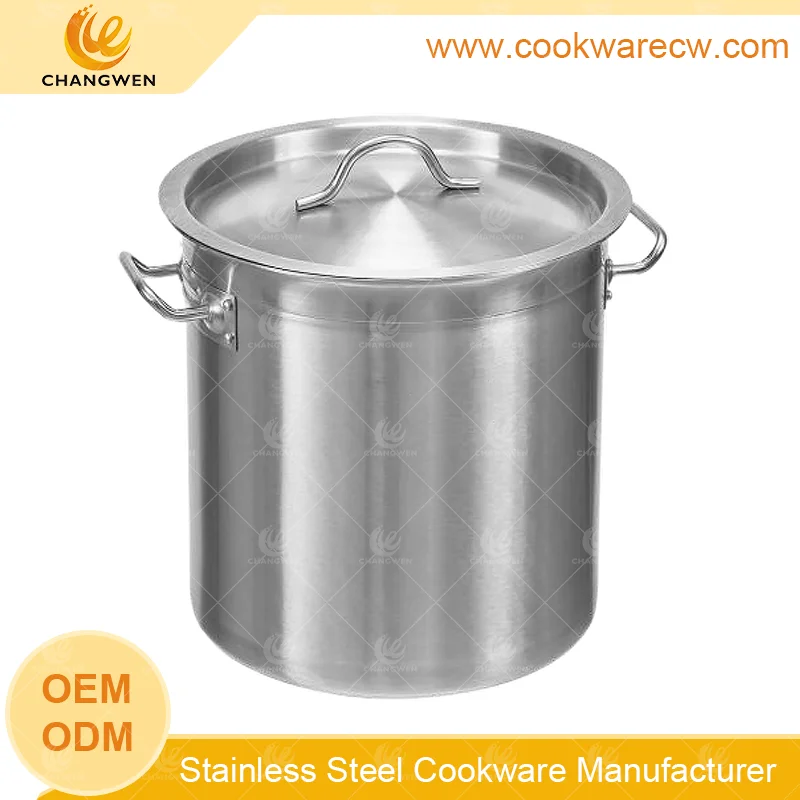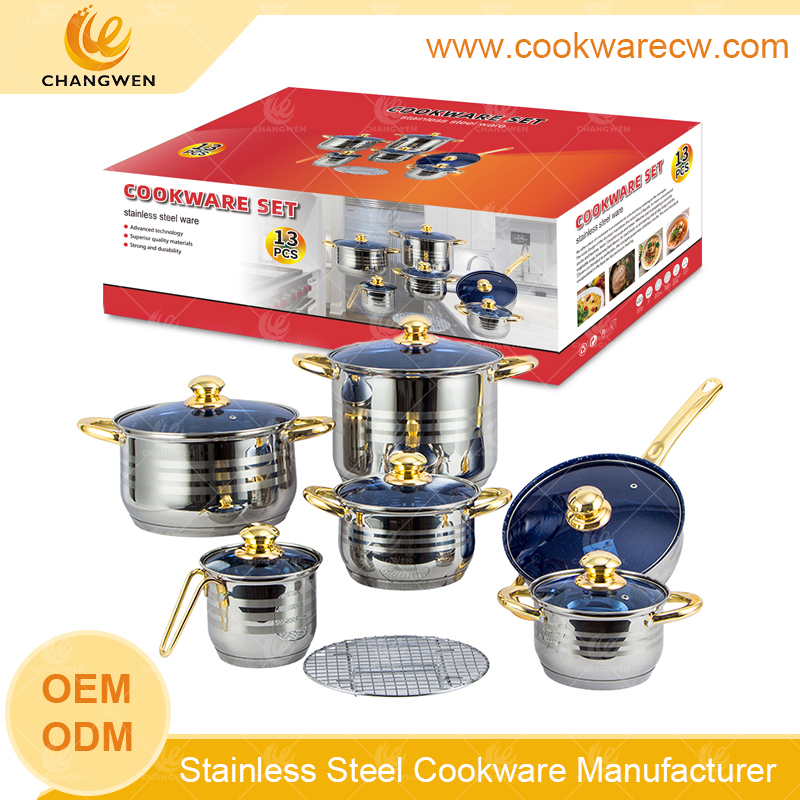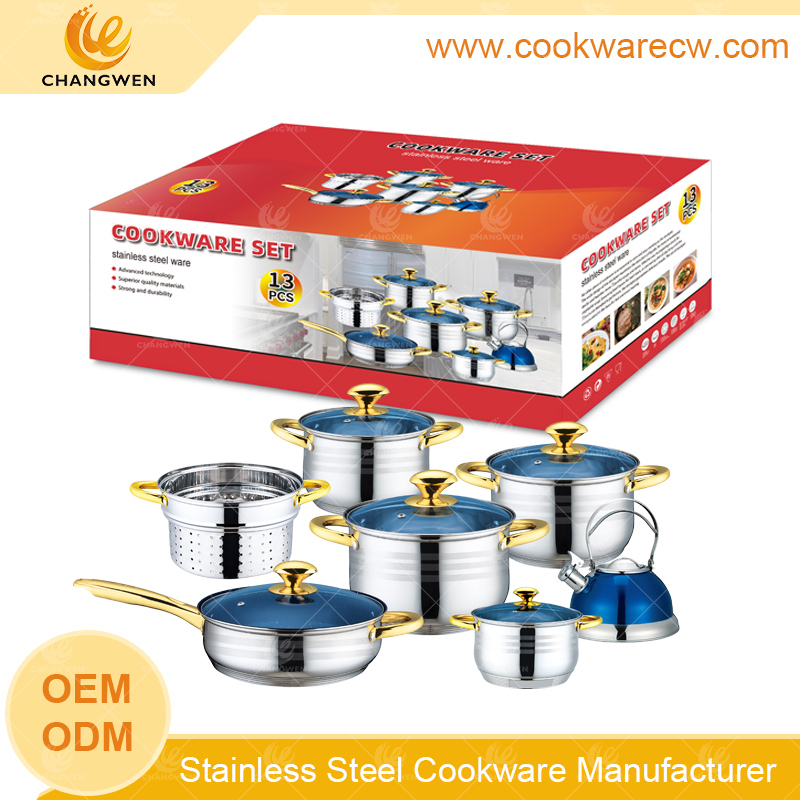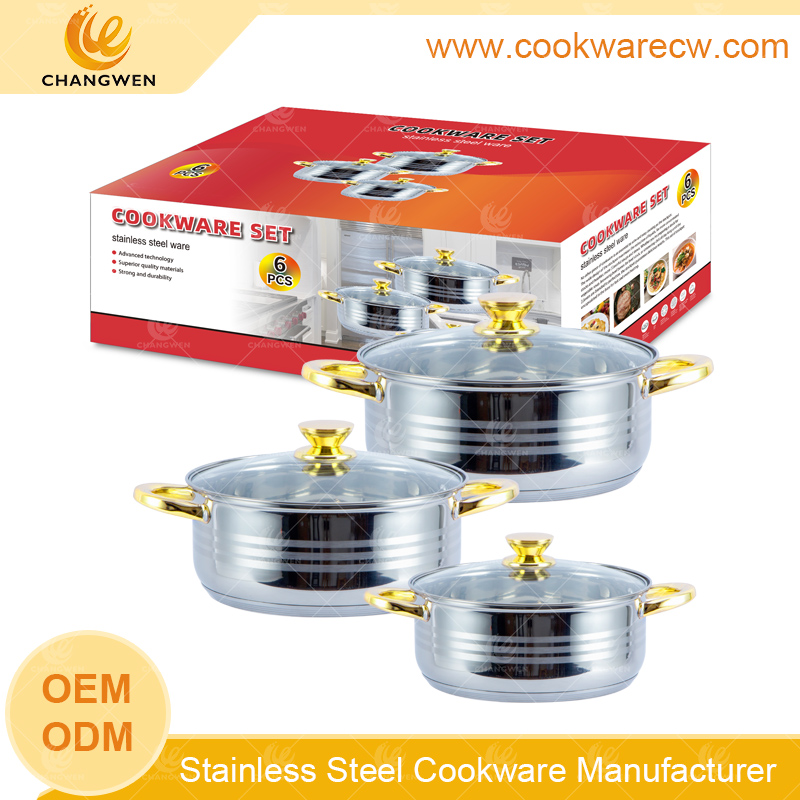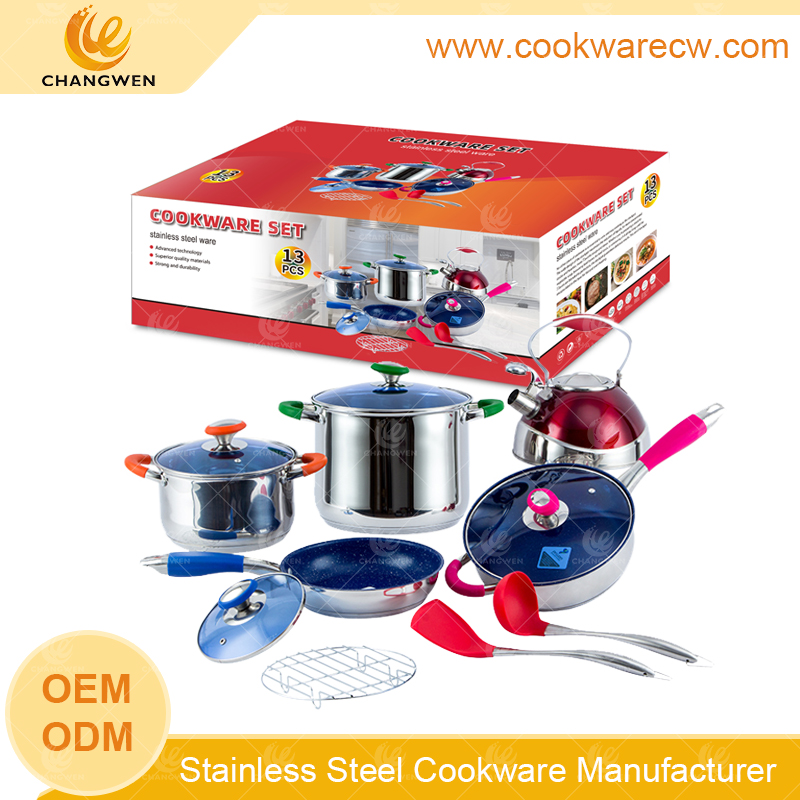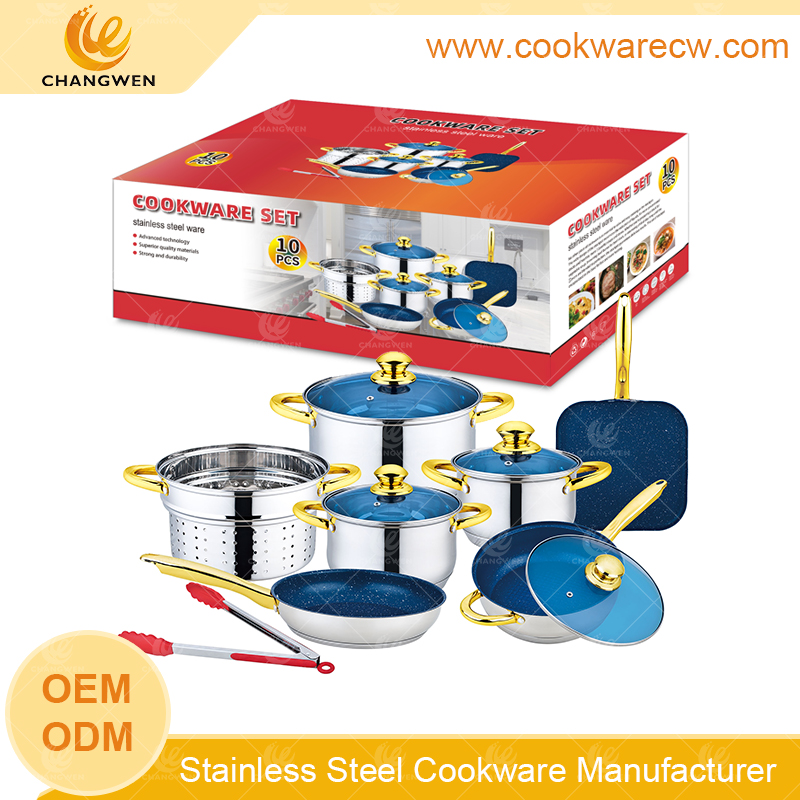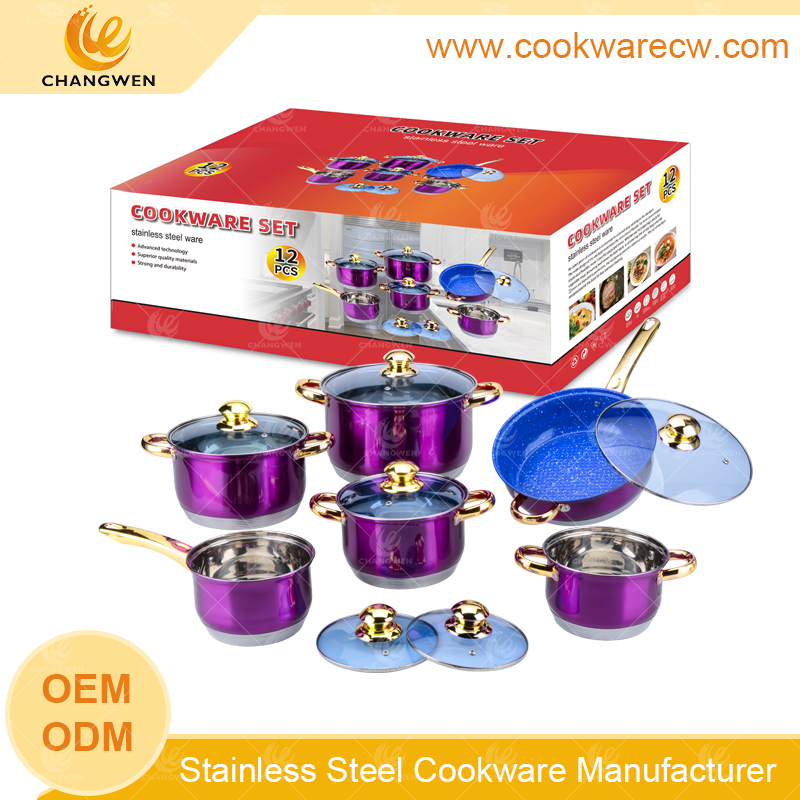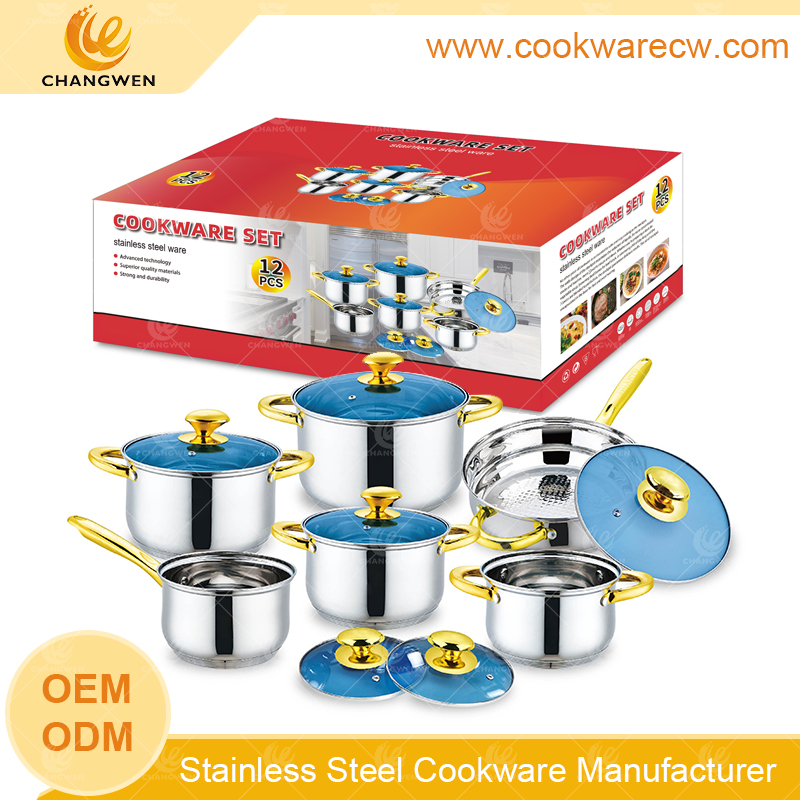Blog & News
We pay attention to the latest news on the product trend of kitchen utensils and continue to develop new products suitable for the market
How to judge the quality of your stainless steel pot?
Views: 293 Author: China CHANGWEN Cookware Publish Time: 09/14/2023 Origin: https://www.cookwarecw.com

The quality of the pot seriously affects the cooking effect. High-quality pots can not only cook delicious dishes, but also make cooks enjoy cooking more and more. So when buying stainless steel pots and pans, how should we distinguish whether it is good or bad?
Distinguish from color, detail and craftsmanship.
First: look at the color
High-quality stainless steel cookware has a strong texture and a bright silver color; poor-quality stainless steel cookware is off-white.
Second: check the details
The edge of the pot mouth of high-quality stainless steel pots is pulled up smoothly, smooth and without cracks; while the edge of the pot mouth of inferior stainless steel pots is pulled up rough, with obvious cracks or repair marks.
Third: look at the craftsmanship
High-quality stainless steel pots are made of steel, aluminum steel, high temperature and high pressure forging, and the connection is firm and does not fall off the bottom.
Stainless steel is the best material for cookware due to its strong sturdiness, superior corrosion resistance, and purity of elements. There are three main types of stainless steel materials that are widely used in the manufacture of utensils on the market:
1.18/0 stainless steel, adding more than 12% chromium, can prevent the general degree of oxidation, resist the erosion of chemical substances, if not maintained properly, there will still be rust. Magnetic.
2.18/8 stainless steel, adding 18% chromium and 8% nickel, can resist chemical oxidation to a certain extent, and is non-magnetic.
3. 18/10 stainless steel, adding 18% chromium and 10% nickel, further improves the physical and chemical oxidation resistance and corrosion resistance. This material is also used in the medical field, and it is non-magnetic.
Look at the product manual or if there is a stamp on the pot. Look at the product manual or if there is a stamp on the pot. Generally speaking, if the body part of the pot that contacts the food is marked with the words “18/10 stainless steel”, the stainless steel with better quality, better corrosion resistance and less impurities is generally used.
The steel-aluminum-steel three-layer composite bottom has fast heat conduction, high efficiency, and can be cooked on medium and small fire; the bottom of the pot has good heat storage, and the residual temperature can be used to cook corresponding dishes. The pot does not contain chemical coatings that are harmful to the human body.
The presence or absence of magnetism cannot be used as a basis for judging the quality of stainless steel. 304 stainless steel itself is non-magnetic, but extrusion and stretching during processing will change the physical properties of stainless steel itself, making it weakly magnetic.
Airtightness is the key. The lid and the pot body must be tightly closed to achieve excellent sealing cooking effect. The advantage is to form heat convection in the pot, accelerate heating and save time.
Use and maintenance:
1. Cook with medium and low heat: The bottom of the pot is made of steel, aluminum and steel three-layer composite bottom, which absorbs heat quickly and transfers heat evenly. Generally, medium heat can fully meet the energy needs during cooking. The advantage is that it saves energy, and the pot is not easy to turn yellow and black.
2. Generally, use a cold pot with cold oil for small frying, that is, put the vegetables in the cold pot, pour the cooking oil, cover the pot, and then turn on medium and low heat.
When steam emerges from the edge of the lid, you can add the seasoning and stir. This will not destroy the vitamins in the food.
3. For stir-fried vegetables that need to sauté onion, ginger or garlic, you can use the method of hot oil to heat the vegetables. If it is beans, you need to add some water, wait for the steam to emerge, and cook it on a low heat for a while.
4. When frying food, to achieve the effect of not sticking to the bottom of the pot, first heat the empty pot until the water bounces into the pot, and there will be small water droplets standing in the middle of the pot, which will not be absorbed by the pot, and then wipe off the water stains. Refueling can achieve non-stick effect.
Or pour the oil into the pot, turn on medium water and fire, and when blocky oil streaks appear after 2-3 minutes, it means that the oil temperature has reached the required temperature.
At this time, adding the food to be fried can play a physical non-stick.
When you need to turn over, try to push the food gently with a spatula. If you can push it, you can turn it over and fry it again. If you can’t push it, you need to fry it for a while before turning it over. This will ensure that it does not stick to the bottom and can keep Food in its original shape.
5. Do not put salt in an empty pot for heating, and do not directly put salt in cold water. The salt that is not fully dissolved will accumulate on the bottom of the pot, which will cause the pot to corrode and produce white spots.
The correct method is to sprinkle salt evenly before the food is out of the pot, so that in addition to damaging the pot, it can also preserve the iodine in the salt.
6. For any stainless steel pot, do not use strong alkaline or strong oxidizing chemicals, such as soda, bleaching powder, sodium hypochlorite, etc. to wash the stainless steel pot, so as not to corrode the product.
7. Stainless steel pots contain chromium and nickel. These two elements can withstand high temperatures below 400°C without being corroded in a non-acid or non-alkali environment, but if they come into contact with acid and alkali foods for a long time, they will also react chemically. Therefore, it is not advisable to store salt, soy sauce, vegetable soup for a long time, or decoction.
we are the top of stainless steel cookware manufacturer in china.
we have OEM service
If you want to get our catalog and lower price moq.
Pls let me know
Latest News
- What is Surgical Stainless Steel Cookware?
- What is 18/10 Stainless Steel Cookware?
- The Ultimate Guide: Where to Buy Large Stainless Steel Steamers
- Stainless Steel Cookware Manufacturers
- Cast Iron Cookware Manufacturers
- How much does a three-layer steamer cost and how to choose one?
- What Materials are Used in Frying Pans, and Which are Good?
- What material is good for stainless steel frying pan?
- Features of Capsule Bottom Stainless Steel Cookware
- What is the difference between stainless steel 18/8, 18/10, 304, and 306
- The Most Important Step in the Nonstick Frying Pan Manufacturing Process
- where is stainless steel frying pan manufactured
- Explore the Differences Between Cheap and Expensive Stainless Steel Cookware
- Advantages and Disadvantages of Chinese Cookware
- Why choose 180/8 material for stainless steel cookware?
- What are the purchasing channels for cookware in Mexico?
- Opening a cookware store in Mexico, how to purchase goods
- Why choose stainless steel cookware when exporting to Mexico?
- A Deep Dive into Stainless Steel Cookware: Comparing 304, 316, 430 and Three-layer Stainless Steel Pots
- A Comprehensive Guide to Cookware Materials and Their Pros and Cons
 English
English Español
Español Português
Português
